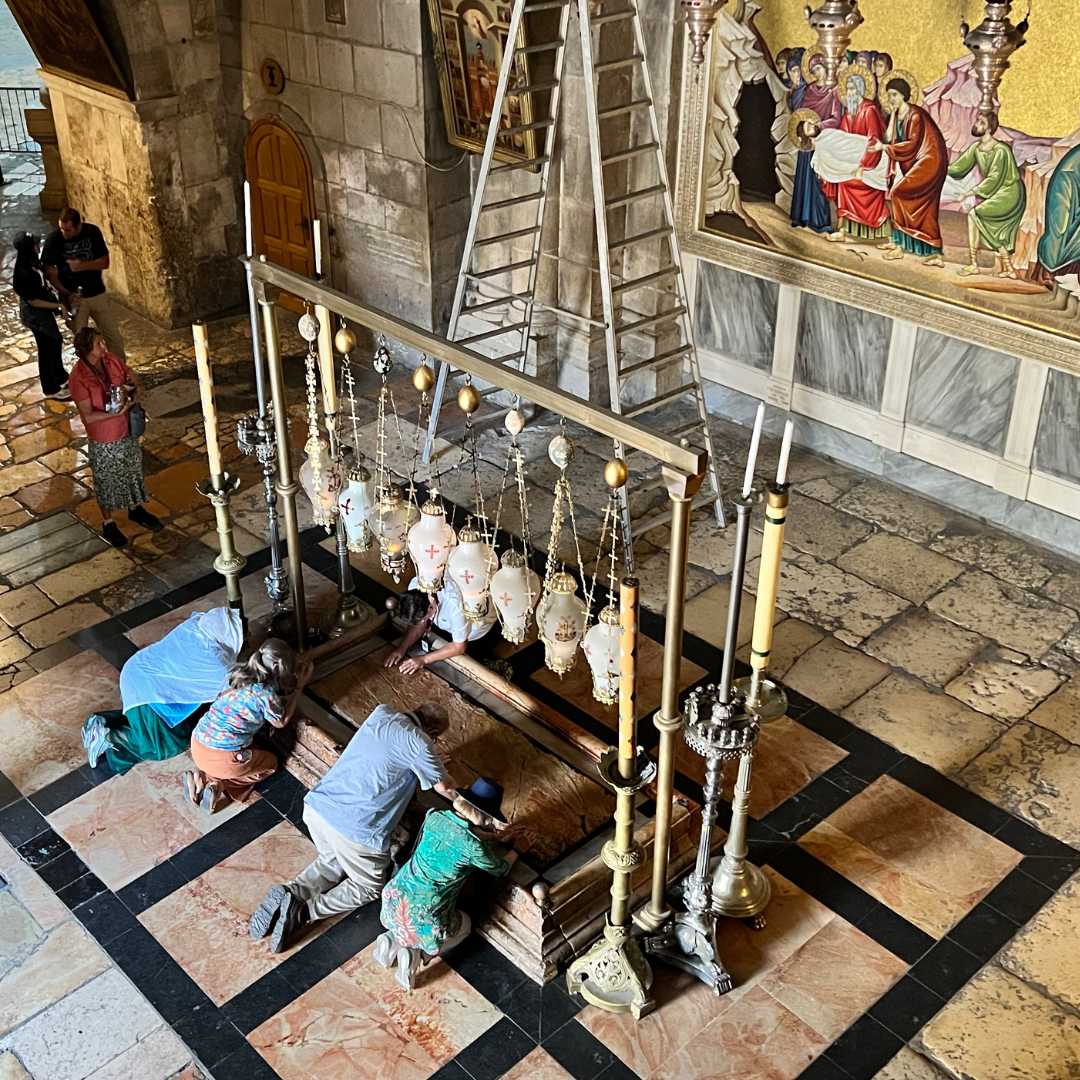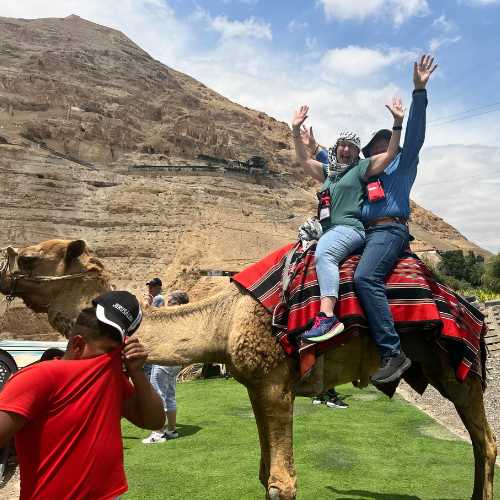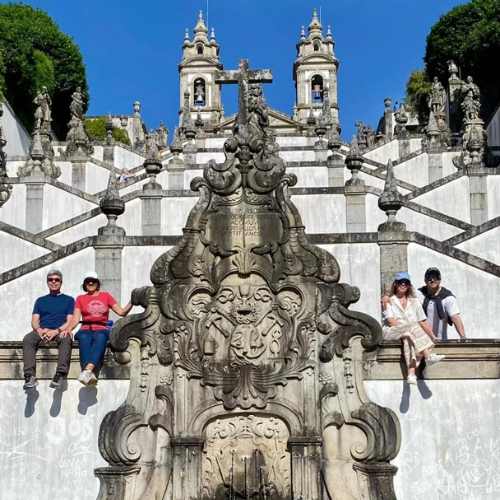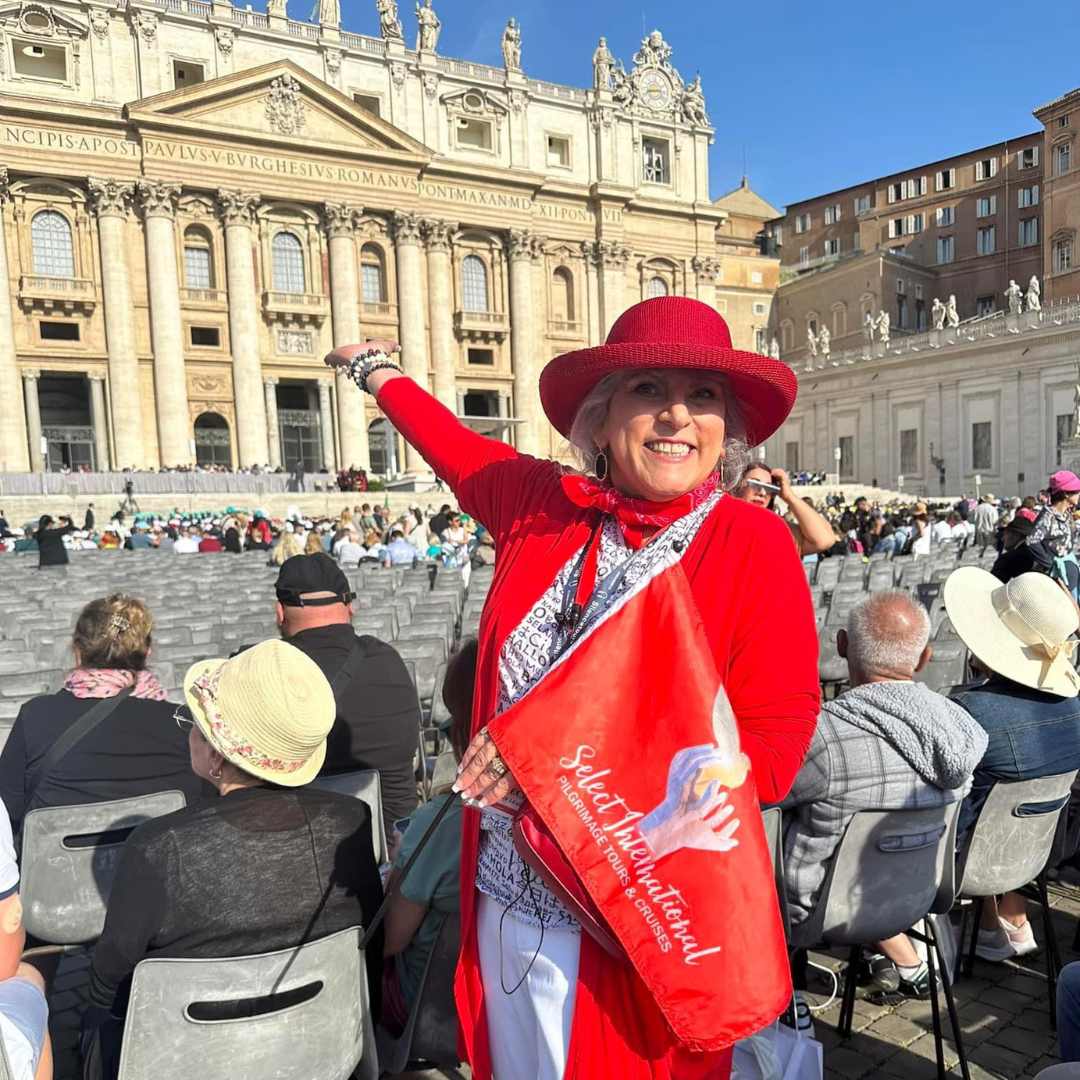Catholic Pilgrimages to Mexico
Book a TripOur Lady of Guadalupe: A Catholic Pilgrimage to Mexico with Select International
The Basilica of Our Lady of Guadalupe continues to be the most visited Catholic pilgrimage site in the world. Millions of pilgrims flock to Tepeyac Hill each year to see where the Blessed Mother appeared to St. Juan Diego in 1531. The miraculous tilma is now showcased in the circular basilica, which allows all in attendance a view of the image of Our Lady of Guadalupe behind the altar.
Mexico is rich in art, architecture, and history.
The Aztecs and the Mayans built tremendous pyramid complexes in Mexico and left a tremendous collection of art and artifacts. Their influence can still be seen throughout the country.
Catholicism came to Mexico with the Spanish in the sixteenth century, and their influence on art and architecture made every Catholic site in Mexico a feast for the eyes. While Our Lady of Guadalupe is a major draw, Mexico is full of moving accounts of the Catholic faith, including the martyr Blessed Miguel Pro and the great Catholic mystic of the 20th century, Blessed Conchita Cabrera.
Our Lady of Guadalupe
Come and see the most visited Catholic pilgrimage site in the world, Our Lady of Guadalupe. You will get to see Our Lady’s image miraculously imprinted on Juan Diego’s tilma, which hangs in the basilica. You can also climb Tepeyac hill to the original apparition site.
Parroquia de la Sagrada (Church of the Holy Family)
Visit the Shrine of Blessed Miguel Pro at the Church of the Holy Family in Mexico City. You may also visit the museum showing many of his notorious disguises and many relics located onsite.
Church of San José del Altillo
María Concepción Cabrera Arias de Armida, now known as the Blessed Conchita Cabrera, was a prolific writer and Catholic mystic. As a laywoman and mother to nine children, she inspires us all to aspire to sainthood.
Pyramids of the Sun and Moon
Built between 100 and 450 AD, the Pyramids of the Sun and the Moon offer a glimpse into pre-historic religion and culture in Mexico. This expansive UNESCO World Heritage site boasts the two largest pyramid in Mesoamerica.
Why Choose Select International Tours for Your Catholic Pilgrimage to Mexico?
Beyond simply visiting Our Lady of Guadalupe, Select International Tours curates experiences that enrich your pilgrimage and strengthen your faith by connecting you to the culture and deep Catholic heritage of Mexico.
Our knowledgeable and faith-filled tour hosts act as more than just group leaders. They provide insightful commentary throughout the journey, leading prayer and fostering a deeper understanding of each site’s historical and spiritual significance. Our local guides ensure you understand exactly what you see and the history involved. Here are some reasons is the perfect choice:
Rich and Unique Itineraries: Our tours are carefully crafted to take you to the most significant Catholic sites in Mexico: places like Our Lady of Guadalupe and Parroquia de la Sagrada. You will also explore Mexico’s rich cultural history and taste its exquisite cuisine. Your tour is customized to your group leader’s exact specifications, which means you get a tour that no one else has.
Excellent Guides and Group Leaders: Many of the most prominent Catholic Clergy, evangelists, speakers, authors, and media personalities travel with Select International Tours. Your Group Leader works with us to craft a unique trip for you. Then, while traveling, they work with the best Local Christian Guides to ensure that you learn the history of each site, get time to pray, and experience the religious and personal significance of visiting these places yourself.
Daily Mass and Time for Prayer: Confirmed Daily Mass at sacred sites throughout the journey is standard on a Select pilgrimage. We also build in time for prayer and veneration, to make sure that yours is a true pilgrimage. Every trip has a priest to ensure that you have spiritual guidance at every turn.
Experience the Culture and History: With Select International Tours, you have time to experience the local culture in unique ways while visiting Mexico. Your tour might include cultural show, a tequillia tasting, or a Mexican cooking class. See the trip brochures for specifics.
The Best Accommodations and Private Motor Coaches: Pilgrimage touring can be tiring, which is why we book the best centrally located hotels for your stay. You’ll also travel in comfort daily on modern private air-conditioned motor coaches.
Your Trip Supports Christians: A small portion of your pilgrimage fee with Select International Tours goes to the Select to Give Foundation, which ensures that Christian families can remain and thrive in the Holy Land.
Select Only Uses the Best Christian Guides
Select International Tours only works with the best and most ethical guides in the business. We wouldn’t trust your trip to anyone we don’t trust.
We were most impressed by our tour guide and the bus driver. [Our Guide] was very knowledgeable, friendly, and truly concerned about our experience. [Our Driver] was a skilled driver through the narrow streets and busy highways.
Our guide for this trip was amazing as well. He was very knowledgeable and helpful. Guiding a group of 40+ people had to be so difficult, but I appreciated everything he did.
Our guide was amazing, so well informed and answered all our questions with excellent answers
Scheduled Mexico Trips
We Are Always Adding New Trips
Finding exactly the right trip for you can seem challenging. It has to be the right duration, on the right dates, and it should be with a leader you trust. Lucky for you, Select constantly adds new trips to give you plenty of options. Click HERE to find a scheduled trip to join or to get notified as we add new trips. Or, better yet, give us a call at 1-800-842-4842, and we will help you find the perfect pilgrimage for you.
Frequently Asked Questions
Click to see more...
Everyone has questions before departing on a pilgrimage. Here are a few common questions that you might be asking.
What’s the Typical Duration of a Pilgrimage?
Our Catholic pilgrimages to Mexico typically range from 7 to 10 days, allowing ample time for spiritual reflection and exploring each site. However, we sometimes offer shorter trips based on the group’s needs.
What’s the Best Time to Go?
Most people visit Mexico in the Winter, Spring, and Fall when temperatures are generally mild during the day with cooler nights.
What Physical Fitness Level Is Required?
A moderate amount of walking will be involved, so a basic level of fitness is recommended. Please see the activity level on the trip you’re considering to understand the amount of walking involved.
What’s Included in the Pilgrimage Cost?
Select International Tours offers all-inclusive packages that cover your flights, accommodations, meals, transportation within Mexico, entrance fees to all sites on the itinerary, and the expertise of our guides. We also offer land-only packages and optional extensions. See the trip brochure for more information.
What Should I Pack?
Comfortable walking shoes, modest clothing suitable for churches, a hat, sunscreen, and a refillable water bottle are essential. You may also want to pack a small Bible and any religious articles that hold personal significance. Be sure to watch some of our Two-Minute Travel Tips for more tips and tricks.
Are There Opportunities to Experience Mexican Culture?
Absolutely! We incorporate visits to charming towns, historic landmarks, local markets, and many special experiences, allowing you to savor the rich tapestry of Mexican culture.
Lead a Custom Pilgrimage for Your Group






Focus on Your People, We'll make the Arrangements
Do you have a group of ten or more people that want to travel together? Let's partner and plan a trip! It's easy to get started.
- Pick a destination.
- Decide when you want to travel.
- Select will arrange all the details.
- Focus on enjoying your trip!
Are you ready to get started? All it takes is a phone call.